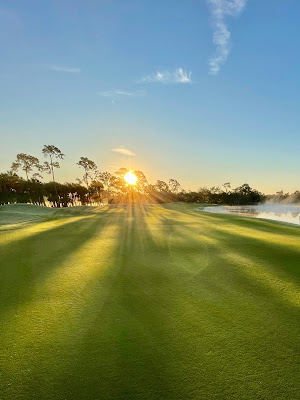Hurricane Ian was a deadly and destructive category 4 hurricane that caused widespread damage across the southeast United States, especially in Florida. Ian originated from a tropical wave east of the Windward Islands on September 19, 2022. The wave strengthened to a tropical storm in the Caribbean, before rapidly intensifying to a hurricane as it made landfall in western Cuba. The storm slightly weakened over land, but re-strengthened once it moved into the Gulf of Mexico.
Hurricane Ian made landfall in Southwest Florida on Wednesday, September 28 as a very strong category 4, tying with several other storms as the 5th-strongest hurricane on record to make landfall in the United States. Ian caused catastrophic damage in parts of Southwest Florida, mostly from flooding due to extreme storm surge and rainfall. All of Southwest Florida was impacted, in particular the areas along the coastline in Collier and Lee County were devastated. Millions were left without power in the storm's wake and the cleanup will take months and rebuilding in some areas will take years.
 |
| The Track of Ian |
While there is never a good time for a hurricane, the timing of Ian was particularly bad for Olde Florida. Last week was the last scheduled closed week of the summer, in addition we had already received just shy of 13" of rain in the month of September. We had several projects and numerous tasks that needed to be completed during the week in preparation for the upcoming winter golf season that could not be accomplished.
Obviously Ian required us to change our agronomic plans and the staff worked diligently on Monday and Tuesday (Sept. 26/27) to prepare the golf course and the buildings for the storm before returning to their own homes Tuesday night to prepare for Wednesday's landfall.
The staff was asked to remain home on Thursday to asses their own personal situation and I inspected the golf course and the buildings. I also needed to make a determination on the safety of travel for my team. Fortunately, all of my staff are okay and they have homes to return to at night.
 |
| Friday, September 30, 2022 |
After the storm passed and the roads were safe, beginning Friday, September 30 my team, along with a half dozen temporary staff have worked daily from 6 a.m. to 5 p.m. cleaning up debris and repairing damage to the golf course. That schedule will remain in place this week. Several of my team are still without power, but they have been at work each day and remain in good spirts!
All three of our rain guages were destroyed during the hurricane, but we estimate Olde Florida received approximately 9" of rainfall. By the end of today, Monday, October 3 we are hopeful the water will have receded into the lakes and all turfgrass will be accessible. We are confident that we will have no turfgrass loss.
September 2022 was one of the wettest on record. As I previously wrote, prior to Hurricane Ian we had received just shy of 13" at Olde Florida, with the rainfall from Ian, the total for the month of September was 22". Year to date we have received 82.85" of rain. This significantly exceeds the average yearly rainfall in Naples, which is 55.64".
By the end of the day today, most of the turfgrass will be clear of debris, but much work remains to remove the debris along the edges of golf holes and repair the cart paths.
On a positive note, the Better Billy Bunker system that was installed during the 2021 golf course renovation performed phenomenally. Other than debris removal, bunker repair will be minimal and no sand replacement will be necessary. Having the Better Billy Bunker System in place not only saved us hundreds of hours of labor to repair bunkers, it also protected the stability of the bunker faces. A detailed report on the Olde Florida Better Billy Bunker renovation can be found by clicking here.
 |
Hole 3 after debris removal and NO sand repair or replacement
|
We were scheduled to perform our last greens aerification (DryJect) last Thursday, September, 29. Unfortunately, we were forced to postpone this. Prior to the storms landfall on Wednesday, we had tentatively re-scheduled it for Friday, or if needed Saturday, October, 1. However, the personal home of the Southwest Florida DryJect franchise owner/operator was flooded by the storm surge and is inhabitable. In addition, several of his staff were in similar situations. He is busy handling his personal affairs and could not complete the process.
Fortunately, I was able to secure the services of the Southeast Florida DryJect franchise owner. They will arrive in Southwest Florida tonight and will begin the process tomorrow, Tuesday, October 4.
 |
| DryJect (last year) September 27, 2021 |
To understand the necessity of the annual DryJect aerification process you can click this link.
We appreciate the patience of the Olde Florida membership and we are confident that we will have the golf course in great shape and open for play on Friday, October 7th.

















































